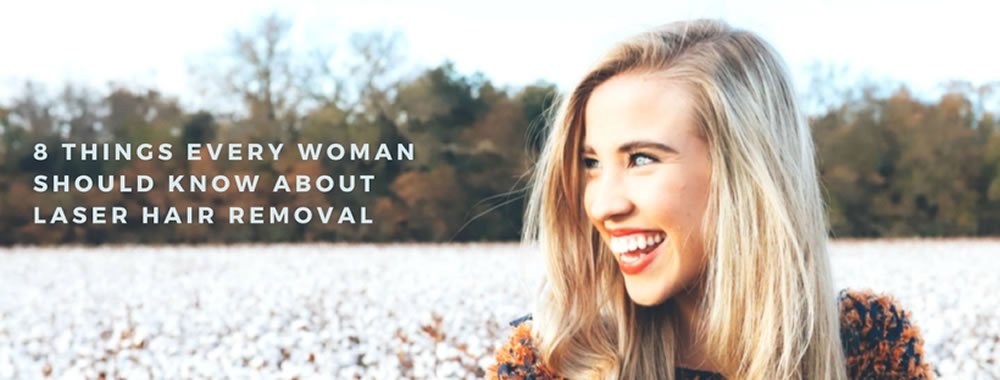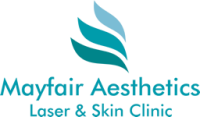8 Things Every Woman Should Know about Laser Hair Removal

1. The best modern laser hair removal systems are not painful.
The most up-to-date systems such as the Soprano Ice Platinum and the Soprano Ice Titanium are virtually pain free. Most clients only experience a gentle warming sensation in the area being treated with some feeling a very mild pins and needles sensation. Other laser systems have differing levels of pain associated with them from mild to ouch. We often see clients who have discontinued treatment with traditional shots based laser systems as they have found the experience far too painful!
2. There are a variety of different skin cooling methods on offer to reduce pain and make the treatment safe.
It is important to consider the cooling method employed by the laser system as this factors greatly in treatment comfort and safety. Typically 1 of 3 different cooling methods are built into modern laser hair removal systems.

- Contact cooling – Through a window cooled by circulating water or other internal coolant. This type of cooling is by far the most efficient method of keeping the epidermis protected since it provides a constant heat sink at the skin surface. Sapphire windows are much more conductive than quartz.
- Cryogen spray – Sprayed directly onto the skin immediately before and/or after the laser pulse
- Air cooling – Forced cold air at -34 degrees C
3. There are different types of laser wavelengths available.
Choosing a laser that works best for your skin and hair type is of vital importance to ensure your treatment is safe and effective.
- IPL – (Not laser) Not as effective as diode in head to head studies and not good for all skin types. May require more treatments. Typically more painful treatment than diode.
- Alex – 755nm Best for lighter skin types, paler hair colours and finer hair.
- Diode – 810nm Good for most skin and hair types.
- ND: YAG 1064nm – The best option for darker skin types and darker haired patients.
Modern laser systems can employ, 1, 2 and in the case of Soprano Ice Platinum and Titanium all 3 laser wavelengths. The more wavelengths utilised in a single treatment will generally equate to a more effective result as the different wavelengths will target finer and thicker hairs and hair sitting at different depths within the skin.

4. There are different treatment techniques that can feel very different while working towards the same goal.
Standard laser systems operate using a ‘shots’ method. This works by exposing hair follicles to a single high energy pulse then moving the apparatus slightly and administering another pulse. While a cooling system is usually employed to make this method more bearable, (but not on older laser models) it can be rather painful and have an increased risk of complications. Also a minimum of 6 weeks wait before treatment after any sun exposure is usually required, hardly convenient over our increasing hot and sunny Summers.
Soprano Ice and Soprano Ice Platinum work in a different way by emitting 10 lower power pulses per second while the treatment applicator is moved back and forth over the area being treated. This gradually heats the dermis to a temperature that effectively damages the hair follicles and prevents re-growth, while avoiding injury to the surrounding tissue. Contact cooling ICE technology cools the skin surface- preventing skin damage which allows for virtually painless yet highly effective hair removal.

5. Visit like clockwork.
6 to 8 treatments are recommended to achieve optimum results with some stronger hair growth areas such as the face and private area possibly needing more treatments. Facial laser hair treatments should be every 4 weeks for the first 4 treatments then every 4-6 weeks thereafter. Body laser hair removal treatments are performed every 6 weeks for the first 4 treatments then every 6-8 weeks after that.6. How many treatments?
Laser hair removal will only treat hair in the Anagen phase of growth, roughly 10-15% of the hair in any particular area will be at this phase at any time. Each treatment, 4-8 weeks apart will treat different hairs at this stage of their life cycle so you may see up to 10-15% reduction in hair per treatment. Most people will go for 6 to 8 treatments per area, possibly more for more resistant areas such as the face or private area.
Book A Free Consultation & Patch Test
7. Patch testing is essential.
It is necessary to patch test before a laser hair removal treatment, even if you have had laser hair removal at a different clinic previously. The procedure allows the laser therapist to explain the treatment in detail, check that your skin is suitable for laser hair removal and will also give you the opportunity to ask any questions you may have. A general inspection of your skin will take place and then a small area of each part of your body you would like to treat will be exposed to the laser light. In addition to ensuring no adverse reactions occur, this also provides the clinic with the opportunity to tailor the machine’s settings to your personal requirements to ensure safety and treatment comfort.
8. Preparation is key
Apart from shaving, avoid any other hair removal methods such as waxing, threading or hair removal creams for 6 weeks prior to treatment. Avoid sun exposure, sunbeds or any kind of fake tan for 2 – 6 weeks (depending on laser model). It is necessary to shave any area to be treated with laser to ensure the session is safe and effective. The optimal time to shave is around 8 hours before your appointment time.
This allows your skin time to calm down and any redness to fade while still leaving a smooth surface for the laser to treat. If hair has not been shaved, the laser will mainly heat up any hair that is outside the skin. This will not be comfortable and could present an increased risk of side effects. This will also result in the treatment being ineffective or less effective.


